Title : Freshwater aquaculture in Mexico: predator and prey
Abstract:
- Aquaculture has a long history in the world since it provides a cheap source of protein to millions of people. In several countries it is also practiced on private property as DIY projects. Mexico is a megadiverse country with high fish diversity. In freshwaters the families Goodeidae and Cichlidae are particularly well represented with 40 species. However, as in most countries, the most commonly fish consumed are carps (7 species) and tilapia (5 species). Among the most important native fish for aquaculture is the genus Chirostoma with 5 species distributed mostly in lakes and reservoirs of Central Mexico. Chirostoma are zooplanktivorus throughout life and hence the importance of adequate zooplankton for their culture. Studies show that Chirostoma fed live rotifers and cladocerans have improved somatic growth and survivorship compared to those offered formulated diets. The importance of live zooplankton is crucial to ensure adequate survivorship and growth during the early stages in the life of fish larvae. Some of the important factors in selecting appropriate prey for fish larvae are the growth rates of the rotifer or cladoceran and the prey preference and functional response of the predator on the given prey. Brachionus calyciflorus among rotifers, and Moina macrocopa among cladocerans, have high growth rates. Both species are also rich in nutrients, especially fatty acids and proteins. They are also widely distributed in tropical countries and cultures are easy to establish. They feed on a large variety of diets and these, among other factors, reduce the costs of maintenance of these prey species. Many larval fish also show a high preference for B. calyciflorus and M.macrocopa. All the above mentioned aspects will be discussed in detail during the presentation.



